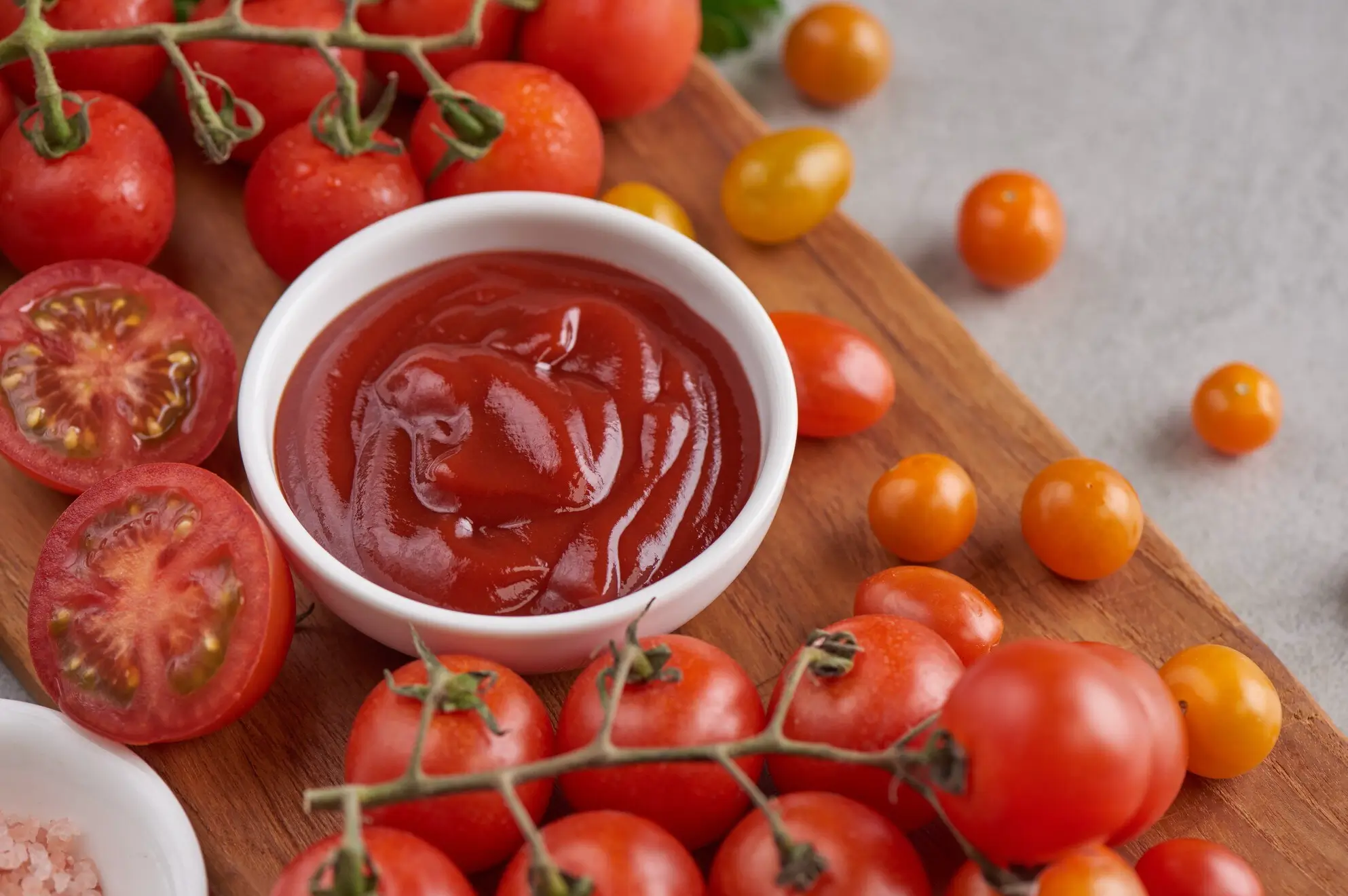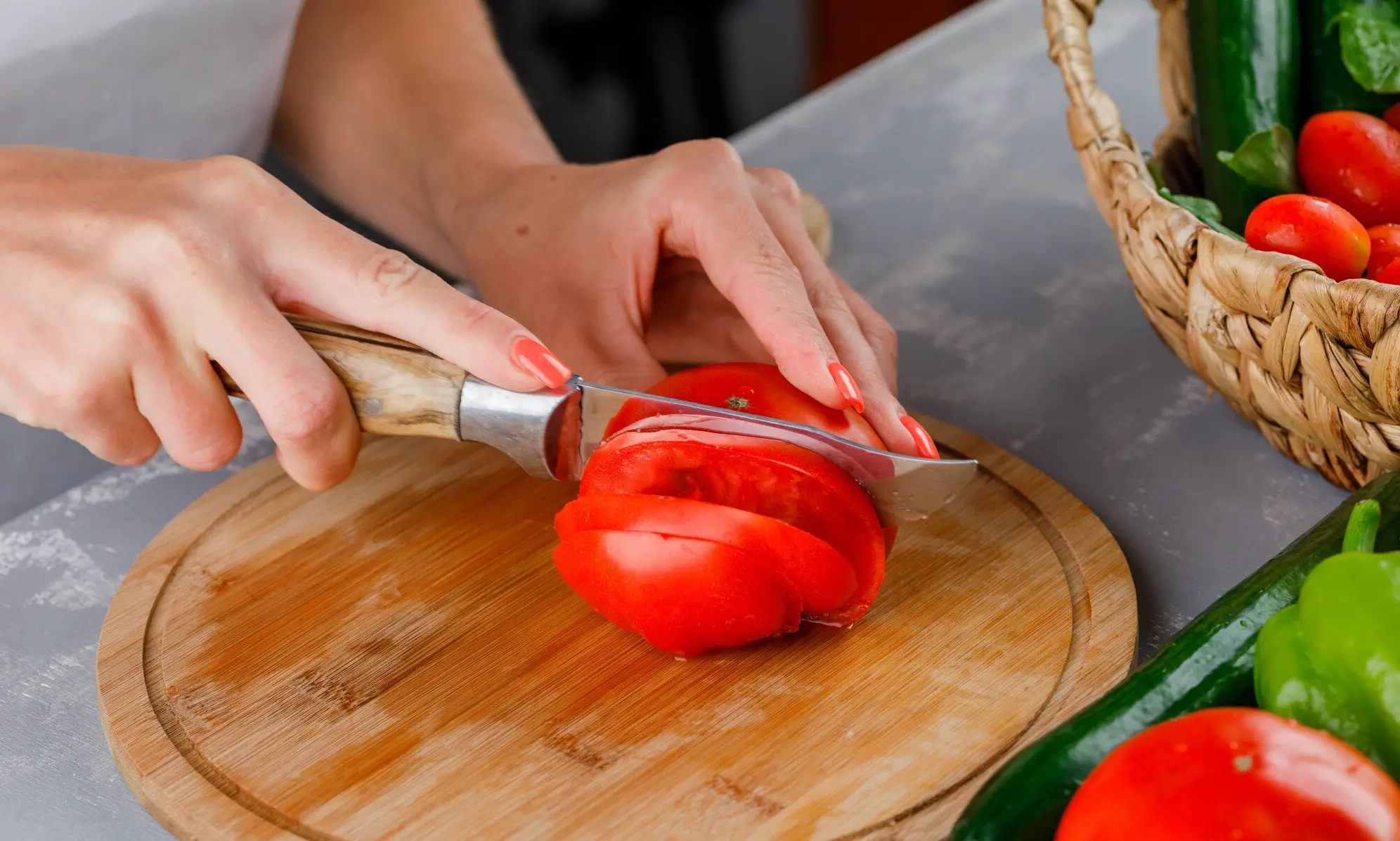Ah, the age-old culinary query: Is peeling tomatoes necessary for homemade pasta sauce? This question has stirred up quite the debate among home cooks and chefs alike. In this comprehensive guide, we’re diving deep into the world of tomatoes and their role in the beloved spaghetti sauce. From the traditional methods of sauce preparation to the nutritional implications of tomato skins, we’ve got it all covered. So, whether you’re a seasoned sauce-maker or a curious newbie, this article promises to shed light on the peeling requirement for fresh tomato spaghetti sauce and more. Let’s embark on this saucy journey, shall we?
Traditional Tomato Sauce Preparation
When it comes to making that perfect batch of fresh marinara sauce, traditions often dictate a meticulous process of peeling tomatoes. But why is this step so revered in the culinary world? Historically, peeling tomatoes was believed to refine the sauce’s texture, removing any trace of skin that could potentially disrupt the silky smooth consistency desired in classic Italian cooking.
However, as we delve deeper, it’s clear that this practice isn’t just about texture. It’s also rooted in the belief that peeled tomatoes offer a purer, more concentrated flavor, essential for a robust and hearty sauce. Interestingly, this step has been passed down through generations, becoming a staple in the recipe books of many traditional cooks.
But here’s a twist: modern culinary explorations and time-saving techniques have started to challenge this age-old practice. The question now is, with advancements in cooking methods and a better understanding of tomato properties, is peeling really essential for a delectable sauce? This article aims to explore just that, unraveling the layers of tradition to uncover the truth behind the necessity of skinning tomatoes in sauce preparation.
For more insights into traditional methods of making spaghetti sauce from scratch, check out our comprehensive guide on Homemade Spaghetti Sauce from Fresh Tomatoes.
In the next section, we’ll dive into the nutritional benefits of keeping those tomato skins on. Stay tuned, as we uncover whether the health benefits outweigh the traditional approach to sauce-making.
Read more about traditional tomato sauce preparation
Nutritional Perspective: Skins in Tomato Sauce
Let’s focus on the nutritional value of tomato skins. These skins are more than just a covering; they’re packed with essential nutrients. For instance, they’re a rich source of dietary fiber, crucial for a healthy digestive system. They also contain a significant amount of vitamins and antioxidants, including lycopene.
Lycopene, a powerful antioxidant, is abundant in tomato skins. It’s linked to reducing the risk of certain cancers and heart diseases. Interestingly, the concentration of lycopene is higher in the skin than in the flesh. So, by peeling tomatoes, you might be missing out on this nutritional gem.
Additionally, tomato skins add a subtle complexity to the sauce’s flavor. They introduce a slight earthiness that can elevate the overall taste. Now, this brings us to the pivotal question: Do you have to peel tomatoes for fresh spaghetti sauce? Considering the nutritional benefits, keeping the skins on might be the healthier choice. However, the debate doesn’t end here. The texture and flavor, integral to a good sauce, also play a significant role.
In the following section, we’ll explore how the presence or absence of tomato skins affects the sauce’s texture and taste. As we peel back the layers of this culinary conundrum, we’re getting closer to answering whether the traditional method of peeling is indeed necessary for that perfect spaghetti sauce.
If you’re looking to pair your spaghetti sauce with a perfectly cooked steak, explore our Ultimate Guide to Cooking Steak in an Air Fryer.
Comparing Textures and Flavors
Let’s dive into the sensory aspects of spaghetti sauce: texture and flavor. The peeling debate often hinges on these factors. Peeled tomatoes offer a smooth texture, a hallmark of traditional sauce. Unpeeled tomatoes, however, bring a rustic feel, which some prefer.
Flavor-wise, peeled tomatoes yield a concentrated taste, favored in classic recipes. Unpeeled tomatoes add depth and earthiness, enhancing the sauce’s complexity. This can be appealing for those who enjoy a robust sauce.
So, our key question remains: Do you have to peel tomatoes for fresh spaghetti sauce? The answer isn’t straightforward and depends on personal preference. Some might choose the smoothness of peeled tomatoes. Others might prefer the rich flavors of unpeeled ones.
Next, we’ll discuss the efficiency and convenience of sauce-making. This will help us understand whether peeling tomatoes is necessary for creating the perfect spaghetti sauce.
Efficiency in Sauce Making
Now, let’s tackle the practical side: efficiency and convenience in sauce-making. For many, the decision to peel tomatoes hinges on the time and effort involved. Peeling, especially in large batches, is time-consuming. It involves blanching, cooling, and then removing the skins. This process is not always appealing, especially for those with busy schedules.
Choosing unpeeled tomatoes can save significant prep time. This approach is quicker and simpler, appealing to busy cooks and beginners alike. It allows more focus on seasoning and simmering, enhancing the sauce’s flavor.
So, in answering Do you have to peel tomatoes for fresh spaghetti sauce?, time and convenience are key. If these are your priorities, peeling may not be necessary. This choice doesn’t mean compromising on quality or taste. As discussed earlier, unpeeled tomatoes can add unique texture and depth of flavor.
For those interested in efficient cooking methods beyond sauce-making, discover if steaks are good when cooked in an air fryer.
Next, we’ll explore the best tomato types for sauce-making. This will help us understand how tomato variety influences the sauce’s final outcome.
Types of Tomatoes and Their Suitability for Sauce
Choosing the right type of tomato is crucial for your sauce, whether peeled or unpeeled. Not all tomatoes are created equal when it comes to sauce-making. Traditional recipes often favor paste or plum tomatoes, like Romas, known for their thicker skin and firmer flesh. These qualities make them ideal for peeling and boiling down quickly on the stovetop, resulting in a denser sauce.
However, if you’re leaning towards unpeeled tomatoes, the options widen. You can experiment with a variety of tomatoes, including cherry and heirloom varieties. These tomatoes bring unique flavors and textures to your sauce, adding a distinct character that peeled Romas might not provide.
So, in considering Do you have to peel tomatoes for fresh spaghetti sauce?, the type of tomato you choose plays a significant role. If you opt for traditional paste tomatoes, peeling might enhance your sauce. But for a more diverse flavor profile, unpeeled, varied tomatoes could be your best bet.
In the next section, we’ll dive into cooking techniques for unpeeled tomatoes. This will give us insights into how to best incorporate them into your sauce for maximum flavor and texture.
Cooking Techniques for Unpeeled Tomatoes
Embracing unpeeled tomatoes in your sauce requires some know-how. The key is to integrate them smoothly into the sauce, ensuring a pleasant texture and rich flavor. One popular method is to use a food processor or blender. This approach breaks down the skins, distributing them evenly throughout the sauce. It minimizes any textural issues while retaining the nutrients and flavors of the skins.
Another technique involves slow cooking. Simmering unpeeled tomatoes over low heat for an extended period allows the skins to soften and meld into the sauce. This method enhances the sauce’s depth of flavor, making the presence of skins almost undetectable.
So, when pondering Do you have to peel tomatoes for fresh spaghetti sauce?, consider these cooking techniques. They can make unpeeled tomatoes not just workable, but desirable in your sauce. With the right approach, unpeeled tomatoes can contribute significantly to the sauce’s overall quality.
Next, we’ll examine the health considerations of peeling tomatoes. This will help us understand if there are any health benefits to peeling, or if keeping the skins on is the way to go.
Health Considerations: Is Peeling Better?
When it comes to health, the decision to peel or not to peel tomatoes for spaghetti sauce is more than just a culinary choice. It’s a nutritional one too. We’ve already touched on the benefits of tomato skins, rich in fiber and antioxidants like lycopene. But is there a health advantage to peeling?
Some argue that peeling tomatoes can reduce exposure to pesticides and contaminants that might reside on the skin. However, this concern can be mitigated by thoroughly washing the tomatoes or choosing organic options. On the flip side, by peeling, you’re stripping away a significant portion of the tomato’s nutritional value.
So, in answering the question, Do you have to peel tomatoes for fresh spaghetti sauce?, from a health perspective, it seems more beneficial to leave the skins on. The skins not only provide essential nutrients but also contribute to a more complex and richer flavor profile in the sauce.
Next, we’ll hear from experts on tomato preparation. Their insights will add another layer to our understanding of whether peeling is necessary for the perfect spaghetti sauce.
Expert Opinions on Tomato Peeling
Diving deeper into our saucy inquiry, let’s consider what culinary experts have to say. Chefs and food connoisseurs often have strong opinions on whether to peel tomatoes for spaghetti sauce. Some traditionalists firmly believe in peeling, arguing that it’s essential for a smooth, refined sauce. They often emphasize the classic texture and flavor that peeled tomatoes bring to the dish.
Conversely, many modern chefs advocate for the unpeeled approach. They highlight the added depth of flavor and the nutritional benefits of the skins. These proponents of unpeeled tomatoes often focus on the rustic, hearty quality that the skins impart to the sauce.
So, in the context of our central question, Do you have to peel tomatoes for fresh spaghetti sauce?, expert opinions vary. It ultimately boils down to personal preference and the desired outcome in terms of texture, flavor, and nutritional value. Both approaches have their merits, and it seems that there’s no one-size-fits-all answer.
In the next section, we’ll explore cultural variations in tomato sauce preparation. This will give us a broader perspective on how different cultures approach this culinary staple.
Cultural Variations in Tomato Sauce Preparation
As we explore the world of tomato sauce, it’s fascinating to see how different cultures approach this culinary staple. Each region has its unique twist on whether to peel tomatoes for their version of spaghetti sauce. In Italy, the birthplace of spaghetti, many traditional recipes call for peeled tomatoes, aiming for a smooth, velvety sauce that’s become synonymous with Italian cuisine.
However, in other parts of the world, such as in rustic Mediterranean or Middle Eastern cooking, unpeeled tomatoes are often used. These regions embrace the full-bodied texture and rich flavor that unpeeled tomatoes bring to their dishes. It’s a testament to the versatility of tomatoes and how different culinary traditions can influence the preparation method.
So, when considering Do you have to peel tomatoes for fresh spaghetti sauce?, it’s clear that cultural preferences play a significant role. Whether you go for the classic Italian approach or opt for a more rustic style, it’s all about the unique flavors and textures you want to bring to your sauce.
Next, we’ll delve into innovative recipes using unpeeled tomatoes. These recipes will showcase how unpeeled tomatoes can be a game-changer in your culinary creations.
Innovative Recipes: Unpeeled Tomato Sauce
Now, let’s get creative with unpeeled tomatoes in the kitchen. Embracing unpeeled tomatoes opens up a world of innovative recipes for spaghetti sauce. These recipes not only simplify the cooking process but also add a unique twist to the traditional sauce.
One such recipe is the rustic unpeeled tomato and basil sauce. This dish celebrates the natural texture of tomatoes, with the skins contributing a slight chewiness and an earthy undertone. Another exciting recipe is the spicy unpeeled tomato arrabbiata, where the skins add to the robustness of the sauce, perfectly complementing the heat from the chili peppers.
These recipes demonstrate that unpeeled tomatoes can be a delightful addition to your sauce repertoire. They challenge the traditional notion and answer the question, Do you have to peel tomatoes for fresh spaghetti sauce? with a resounding no. Unpeeled tomatoes not only save time but also bring a new dimension of flavor and texture to your dishes.
In the next section, we’ll explore the role of tomato sauce in Italian cuisine, delving into its significance and how it has evolved over time.
The Role of Tomato Sauce in Italian Cuisine
Italian cuisine, renowned for its rich flavors and traditional recipes, holds tomato sauce in high esteem. In Italy, the sauce is more than just a culinary component; it’s a cultural emblem. The classic Italian tomato sauce, often made with peeled tomatoes, is celebrated for its smooth texture and deep, concentrated flavor. This traditional approach reflects the Italian emphasis on purity and simplicity in ingredients.
However, even within Italy, there’s a growing appreciation for more rustic styles. Unpeeled tomato sauces are gaining popularity, especially among those who seek a more authentic, home-cooked feel. This shift signifies a broader culinary trend where tradition meets innovation.
So, in the context of Italian cuisine, the answer to Do you have to peel tomatoes for fresh spaghetti sauce? is evolving. While the classic peeled tomato sauce remains a staple, the unpeeled variety is carving out its own space in the Italian kitchen.
Next, we’ll dive into a FAQs section, addressing common questions and curiosities about tomato sauce preparation. This will provide further insights and practical tips for both novice and experienced cooks.
FAQs on Tomato Sauce Preparation
As we near the end of our tomato journey, let’s address some frequently asked questions about preparing spaghetti sauce.
Q1: Do you have to peel tomatoes for fresh spaghetti sauce? A1: Not necessarily. While peeling tomatoes is traditional for a smooth sauce, unpeeled tomatoes can add texture and nutrition.
Q2: What are the best tomatoes for spaghetti sauce? A2: Paste tomatoes like Romas are traditional for peeled sauces, but for unpeeled sauces, feel free to experiment with various types, including cherry and heirloom tomatoes.
Q3: Can unpeeled tomatoes affect the sauce’s flavor? A3: Yes, unpeeled tomatoes can add a richer, more earthy flavor to the sauce, enhancing its overall taste profile.
Q4: How can I reduce the time spent on sauce preparation? A4: Using unpeeled tomatoes saves time. Also, consider simple cooking techniques like blending or slow simmering.
Q5: Are there health benefits to using unpeeled tomatoes in sauce? A5: Absolutely. Unpeeled tomatoes retain more nutrients, including fiber and lycopene, which are beneficial for health.
In conclusion, whether to peel tomatoes for spaghetti sauce depends on your preferences for texture, flavor, and nutrition. Both peeled and unpeeled tomatoes have their unique qualities that can make your sauce special.
Conclusion
In wrapping up our saucy exploration, it’s clear that the question, Do you have to peel tomatoes for fresh spaghetti sauce?, doesn’t have a one-size-fits-all answer. It boils down to personal preferences and what you value most in your sauce – be it texture, flavor, nutritional content, or convenience. Traditionalists might stick to peeling for that classic smoothness, while modern adventurers may embrace the rustic charm of unpeeled tomatoes.
Ultimately, the beauty of cooking lies in experimentation and personalization. Whether you choose to peel your tomatoes or not, each method offers its unique charm and benefits. So, go ahead, experiment with both styles, and discover what works best for your culinary creations!



